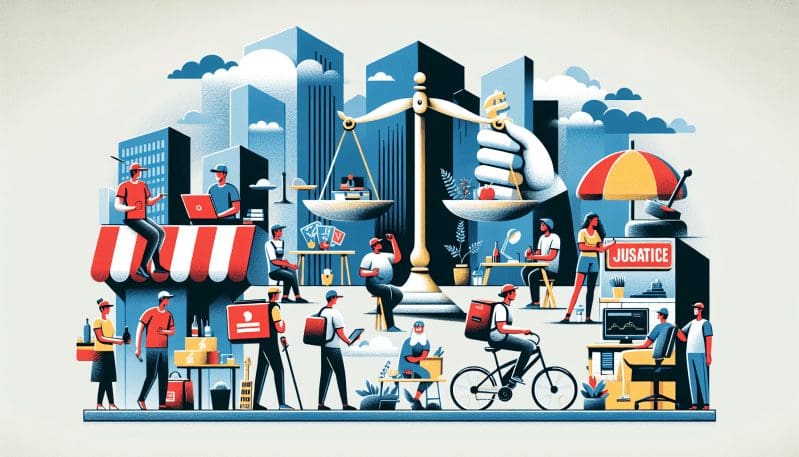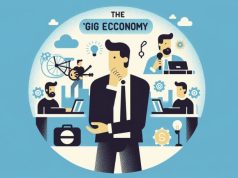In the bustling streets of New York, the gig economy has emerged as a beacon of flexibility for those seeking to redefine their working hours and career trajectories. This new economic realm, characterized by temporary contracts or freelance work as opposed to permanent jobs, has undeniably revolutionized the labor landscape. Yet, it brings to the forefront a critical conversation about the stability and rights of those it employs—conversations that resonate with the readership of The New York Times, a demographic with a rich history of advocating for worker protections.
The rise of the gig economy in New York, a hub of innovation and commerce, has been both rapid and remarkable. Companies like Uber, Lyft, and TaskRabbit promise the allure of ‘being your own boss,’ but often at the cost of the securities that traditional employment affords. The flexibility that gig work offers stands in stark contrast to the absence of healthcare benefits, retirement plans, and stable income—amenities that New York’s labor laws have historically fought to secure.
As we examine the gig economy through the lens of a New York Times perspective, it’s important to recognize that this readership values robust debate and thorough analysis. The Times’ readers have long championed labor rights, standing in solidarity with movements that push for fair wages and safe working conditions. This engaged and informed audience understands the complexities of balancing economic growth with social responsibility. Furthermore, they appreciate nuanced discussions about the evolution of work and workers’ rights.
To truly grasp the implications of the gig economy on worker rights, we must listen to the voices of those directly involved: the gig workers themselves. Many express appreciation for the flexible scheduling but lament the unpredictability of income and the lack of job security. Meanwhile, labor activists and unions in New York are fiercely debating the need for a legal framework that adapts to this new model of work. They argue that current labor laws fall short of protecting gig workers, many of whom are as integral to the economy as traditional employees.
Legal experts also contribute to this conversation, discussing the potential for new legislation that could offer protections akin to those provided in traditional employment. This might include minimum wage guarantees, access to insurance and benefits, and the right to unionize. The challenge lies in crafting laws that preserve the independence that gig work offers while ensuring that worker rights are not sidelined.
The gig economy is not a fleeting trend—it’s a significant shift in our understanding of what it means to work. As New York grapples with this change, it must look to its history of labor rights advocacy while forging a new path forward. This means embracing innovative solutions that uphold the rights and dignities of gig workers.
Within this blog, we will dive deep into the gig economy’s impact, revealing the nuanced realities faced by those within it. By considering the collective insights of gig workers, activists, and legal experts, we will explore the potential for legislation that honors the evolving nature of work while safeguarding worker rights. Such dialogue is not only essential for New York’s workforce but also for the millions of gig economy workers worldwide looking to strike a balance between flexibility and security in the modern age. The conversation starts now, and The Work Times is proud to be at its forefront, continuing the legacy of informed and impassioned debate that The New York Times’ readers have always embraced.

























